Mayor of Paris facts for kids
Quick facts for kids Mayor of Paris |
|
|---|---|

Flag of the Mayor of Paris
|
|
| Residence | Hôtel de Ville |
| Appointer | Elected by the Council of Paris |
| Term length | 6 years, renewable indefinitely |
| Inaugural holder | Jean Sylvain Bailly |
| Formation | 15 July 1789 20 March 1977 |
| Salary | €8,650 (monthly) |
The Mayor of Paris (called Maire de Paris in French) is the main leader of Paris, which is the capital and largest city in France.
The mayor is in charge of running the city. They suggest ideas to the Council of Paris, make sure city rules are followed, and present the city's yearly budget. The mayor also chooses people for different city jobs and boards. During meetings of the Council of Paris, the mayor leads the discussion, just like in other towns in France. Since Paris is also a "department" (a region), the mayor acts like a leader for that department too.
Since April 5, 2014, Anne Hidalgo from the Socialist Party has been the Mayor of Paris.
History of the Mayor's Office
When the French Revolution started on July 14, 1789, after the storming of the Bastille, the people of Paris rose up. They killed the city's old leader, Jacques de Flesselles. Because the old leadership was removed, the people created a new government called the "Commune of Paris."
The first person to be called "Mayor of Paris" was Jean Sylvain Bailly. The mayor's job was very important during the Revolution. During a time called the Reign of Terror (1793–1794), the mayor's office helped find and punish people who were thought to be against the revolution.
In July 1794, after a big change in power that removed and executed Robespierre, the mayor's office was ended. People thought it had become too powerful.
After another revolution in February 1848, a new French Republic began. The mayor's office was brought back. However, this didn't last long. After some unrest in June of the same year, the government decided not to have a strong mayor. Instead, they gave the mayor's powers to a "Prefect" who was chosen by the government.
In 1870, the Mayor of Paris office was started again. This happened after France lost a war against Prussia. The temporary government thought a strong leader in Paris would help prevent trouble during the Prussian siege. But after Paris was taken, more unrest led to a new "Paris Commune" with socialist ideas. To prevent future city-wide rebellions, the new national government decided to divide Paris into many smaller mayoral areas, one for each district.
So, for most of the time between 1794 and 1977, Paris was the only city in France without its own mayor. It had less freedom than even the smallest village. For many years, it was directly controlled by a government official called a prefect.
In 1975, the French Parliament passed a law to bring back an elected mayor for Paris, starting in 1977. This law was signed by President Valéry Giscard d'Estaing on December 31, 1975. In March 1977, after the first city-wide election, former Prime Minister Jacques Chirac became the Mayor of Paris. He held this job until 1995, when he was elected President of France.
List of Paris Mayors
Notes † Died while in office
| No. | Mayor | Term in office
Elections |
Previous office | Party | Deputy | ||
|---|---|---|---|---|---|---|---|
| 1 | 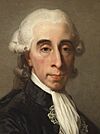 |
Jean Sylvain Bailly 1736–1793 (Aged 57) |
15 July 1789 | 18 November 1791 | President of the National Assembly (1789) |
Patriotic | Office did not exist |
| 1789 | |||||||
| 2 | 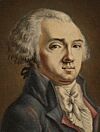 |
Jérôme Pétion de Villeneuve 1756–1794 (Aged 38) |
18 November 1791 | 1 December 1792 | Representative to Estates General for the Third Estate (1789) |
Girondin | |
| 1791 | |||||||
| 3 | Henri Lefèvre d'Ormesson 1751–1808 (Aged 56) |
21 November 1792 | 8 December 1792 | Judge in the 6th arrondissement (1790–1792) |
Girondin | ||
| 1792 (November) | |||||||
| 4 |  |
Nicolas Chambon 1748–1826 (Aged 78) |
8 December 1792 | 14 February 1793 | Paris Financial Administrator (1790–1791) |
Girondin | |
| 1792 (December) | |||||||
| 5 | 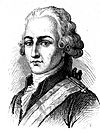 |
Jean-Nicolas Pache 1746–1823 (Aged 77) |
14 February 1793 | 10 May 1794 | Minister of War (1792–1793) |
Jacobin | |
| 1793 | |||||||
| 6 | 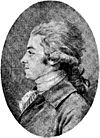 |
Jean-Baptiste Fleuriot-Lescot † 1761–1794 (Aged 33) |
10 May 1794 | 27 July 1794 | Public Prosecutor of the Revolutionary Tribunal (1793–1794) |
Jacobin | |
| 1794 | |||||||
| Office abolished (1794–1848) | |||||||
| 7 | 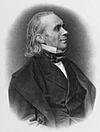 |
Louis Antoine Pagès 1803–1878 (Aged 75) |
24 February 1848 | 9 March 1848 | MP for Eure (1846–1848) |
Constitutionalist Republican |
Office did not exist |
| N/A | |||||||
| 8 | 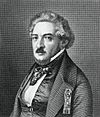 |
Armand Marrast 1801–1852 (Aged 50) |
9 March 1848 | 19 July 1848 | MP for Haute-Garonne (1848–1849) |
Constitutionalist Republican |
|
| N/A | |||||||
| Office abolished (1848–1870) | |||||||
| 9 | 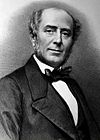 |
Étienne Arago 1802–1892 (Aged 90) |
4 September 1870 | 15 November 1870 | MP for Pyrénées-Orientales (1848–1851) |
Radical Republican | Office did not exist |
| N/A | |||||||
| 10 | 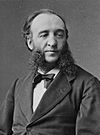 |
Jules Ferry 1832–1893 (Aged 60) |
15 November 1870 | 18 March 1871 | MP for Seine (1869–1870) |
Moderate Republican | |
| N/A | |||||||
| Office abolished (1871–1977) | |||||||
| 11 | 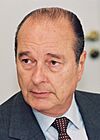 |
Jacques Chirac 1932–2019 (Aged 86) |
20 March 1977 | 13 March 1983 | Prime Minister of France (1974–1976) |
Rally for the Republic | Christian de La Malène |
| 1977 | |||||||
| 13 March 1983 | 19 March 1989 | Jean Tiberi | |||||
| 1983 | |||||||
| 19 March 1989 | 16 May 1995 | ||||||
| 1989 | |||||||
| 12 | 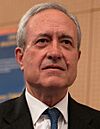 |
Jean Tiberi 1935–2025 (Aged 90) |
22 May 1995 | 25 March 2001 | MP for Paris (1976–2012) |
Rally for the Republic | Jacques Dominati |
| 1995 | |||||||
| 13 | 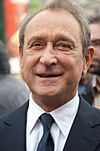 |
Bertrand Delanoë Born 1950 |
25 March 2001 | 16 March 2008 | Senator for Paris (1995–2001) |
Socialist Party | Anne Hidalgo |
| 2001 | |||||||
| 16 March 2008 | 5 April 2014 | ||||||
| 2008 | |||||||
| 14 |  |
Anne Hidalgo Born 1959 |
5 April 2014 | 3 July 2020 | Deputy Mayor of Paris (2001–2014) |
Socialist Party | Bruno Julliard |
| 2014 | |||||||
| Emmanuel Grégoire | |||||||
| 3 July 2020 | Incumbent | ||||||
| Patrick Bloche | |||||||
| 2020 | |||||||
See also
- Administration of Paris


